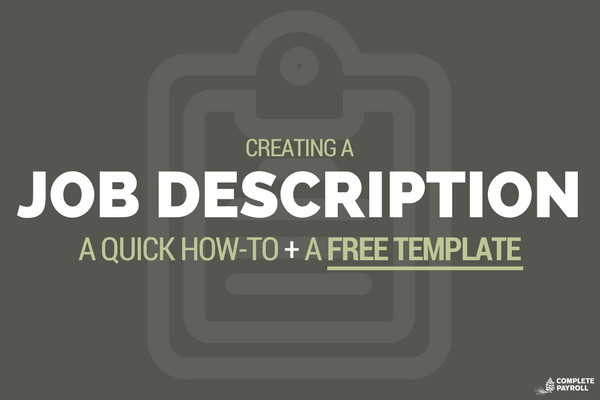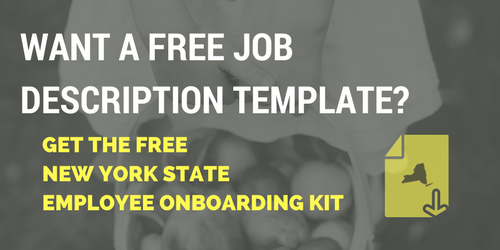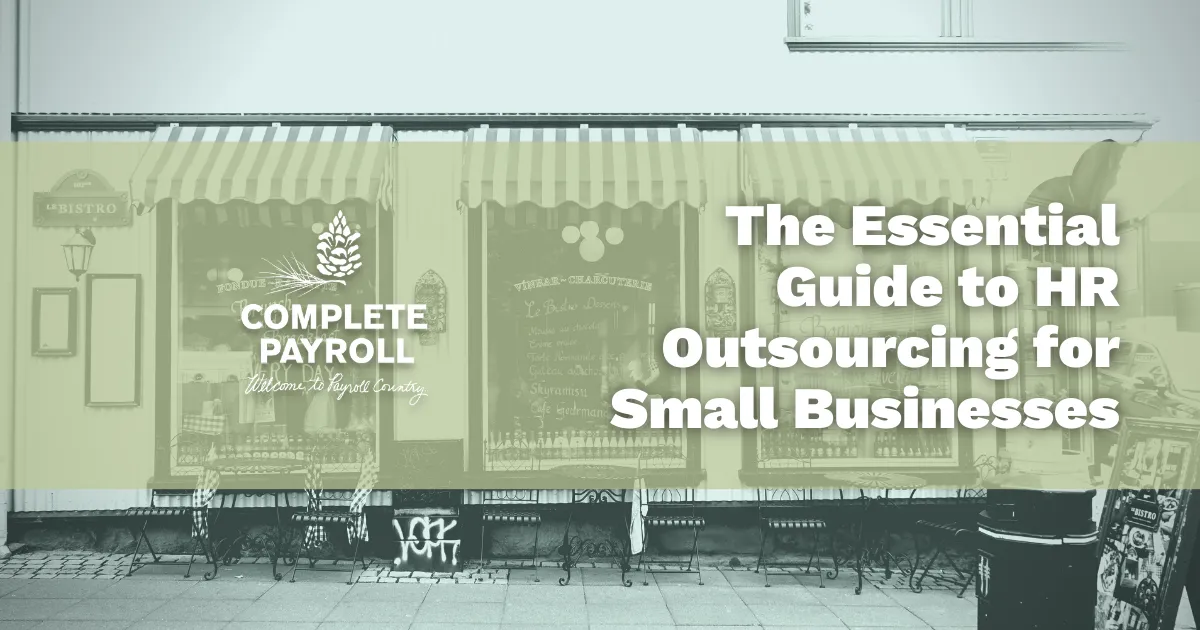Job Description Template | How to Create a Job Description

Written by Complete Payroll

.png?width=600&height=400&name=Job%20description%20template%20(1).png)
If you're hiring an employee for the first time, chances are you've never created a professional job description before. No worries. This article will walk you through the process and even offer a free job description template to help you get started.
But first, why job descriptions are critical
A simple Google search will reveal scores of articles that explain why job descriptions are essential, but we'll break them down as simple as possible.
- Attracting talent. The best way to help a candidate figure out if they're both interested and qualified in your position is to have a detailed job description. The benefits of a job description actually begin before you even meet your candidate(s).
- Setting expectations. You wouldn't go on a road trip without first knowing your destination. The right employee is going to want to understand what's expected of them and how they're going to be evaluated.
- Evaluation critera. As the employer, you want to get clear on how you'll be evaluating your employee. And you'll want them to know that, too. A job description is the perfect document to reference during a performance review.
- Scaling growth. Employees leave companies for a variety of reasons. Also, companies grow, creating the need to hire more people for the same position. Either way, your positions will open up again in the future. Having job descriptions will save you time and energy when hiring for that position again in the future.
- Protecting your business. In the unfortunate event you have to terminate an employee because they failed to perform their essential functions, having a job description that was signed by both you and your employee will serve as additional protection in case you're faced with some kind of legal dispute.
Simply put? Creating a detailed job description for every position within your company is a simple step with several short- and long-term benefits.
How to create a job description
Unlike certain aspects of the hiring and onboarding process (like completing the I-9 Form or the W-4 Form), job descriptions are not regulated by any state or federal government. That means technically you can create your job descriptions however you'd like. However, most effective job descriptions include the following categories...
- Summary. The summary should describe the job in the simplest possible terms, ideally in 1-2 sentences. It should also include the official job title and the person it reports to.
- Purpose or functions. This section tends to be the most lengthly section on a job description, and the information is often presented in bulleted form. List the primary job duties and responsibilities using headings and then give examples of the types of activities under each heading. Using headings and giving examples of the types of activities to be done allows you to develop a flexible job description that encourages employee to ‘work outside the box’ and within reason, discourages “that’s not my job”. Identify between three and eight primary duties and responsibilities for the position, and list them in order of importance.
- Attributes and/or qualifications. State the minimum qualifications required to successfully perform the job. These are the qualifications that are necessary for someone to be considered for the position and may include education, specialized knowledge, skills, experience and other abilities.
- Reporting. Provide details on the reporting and organizational structure. This will help the employee better understand how their activities fit into the total organization.
- Evaluation critera. This section will enable you to define what is most important for the organization as well as the employee. Make sure the evaluation criteria of the position will reinforce the type of activities to enhance the success of the business.
- Physical requirements. If the job is physically demanding, this should be stated in the job description. A physically demanding job is one where the incumbent is required to stand for extended periods of time, lift heavy objects on a regular basis, do repetitive tasks with few breaks, and so forth.
- Compensation. Explain the entire compensation package, which may include a salary or hourly rate, commission, bonuses and other compensation. Be as specific as possible.
- Working conditions. If the job requires a person to work in special working conditions this should be stated in the job description. Special working conditions cover a range of circumstances from regular evening and weekend work, shift work, working outdoors, working with challenging clients, and so forth.
Job descriptions are an essential part of good management. If you're ready to create a job description, check out our New York State Employee Onboarding Kit which includes a job description template.
If you're hiring an employee, or think you might be soon, check out our comprehensive resource page, Employee Onboarding - A Complete Guide. This is a handy, tightly-packaged outline that presents all the critical hiring and onboarding elements in simple, chronological order.



















